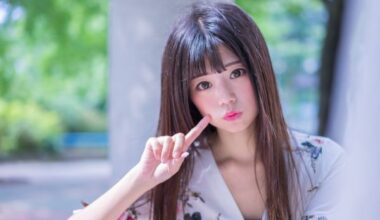Have you ever noticed couples who seem to share an uncanny resemblance? The phenomenon of couples looking like siblings is a curious topic that delves into the realms of genetics, psychology, and cultural influences. Beyond the initial intrigue, understanding why couples exhibit such similarities is a window into the intricacies of human attraction and connection.
Why Do Couples Look Like Siblings
Couples often share physical similarities because of a phenomenon known as assortative mating. This occurs when individuals are attracted to and choose partners who have similar traits, such as facial features, body type, or even hair color. Additionally, couples may unconsciously adopt similar grooming styles or fashion choices over time, further enhancing their resemblance.
It’s also worth noting that familiarity plays a role; people tend to be attracted to those who remind them of themselves or their family members. However, while some couples may look like siblings, it’s important to remember that love and attraction are complex, and physical resemblance is just one facet of a multifaceted relationship. In this article, we delve into the intriguing reasons behind why couples sometimes appear as if they could be related.
Genetic Similarities
One of the primary factors contributing to couples looking like siblings lies in the realm of genetics. Our DNA carries a blueprint for our physical traits, and when two people with similar genetic backgrounds come together, there’s a heightened likelihood of shared features. This is particularly true for partners who come from the same ethnic or familial backgrounds. The genetic intertwining results in a harmonious blend of characteristics that can manifest as physical resemblance.
Attraction and Mate Selection
The notion of “birds of a feather flock together” holds true in the world of romantic relationships as well. Assortative mating, a concept where individuals with similar traits are drawn to each other, plays a role in the likeness between couples. Subconsciously, we are often attracted to people who mirror our own characteristics. This can range from facial symmetry to body type, creating a visual kinship that is noticeable to others.
Cultural and Social Influences
Beyond genetics, shared environments and lifestyles also play a pivotal role in why couples look like siblings. Partners who spend significant time together are likely to adopt similar habits, routines, and even fashion choices. Over time, these shared experiences can lead to a convergence of style and appearance, resulting in an unintentional mirroring effect.
Unconscious Mimicry
Human beings are wired for mimicry, a psychological phenomenon where we unconsciously imitate the actions and expressions of those around us. In couples, this can lead to a synchronization of facial expressions, gestures, and mannerisms. As two individuals continue to mirror each other’s behaviors, their physical appearances may gradually align, further solidifying the sibling-like resemblance.
Evolutionary Perspectives
From an evolutionary standpoint, there are theories that suggest an advantage to resembling one’s partner. Mate recognition and kinship signals could have played a role in early human societies, helping couples identify each other and fostering a sense of unity. Looking like siblings could have signaled a strong bond and contributed to better cooperation within communities.
Media and Celebrity Influences
The media, including celebrity couples, wield significant influence over societal perceptions of beauty and attraction. It’s not uncommon for couples in the public eye to set trends, inadvertently encouraging individuals to emulate their styles and appearances. This emulation, driven by media exposure, can contribute to couples adopting similar looks, further fueling the phenomenon of resembling siblings.
Role of Personal Choices
While genetics and subconscious factors play substantial roles, couples also consciously shape their appearances. From coordinated outfits to shared grooming routines, personal choices contribute to the sibling-like resemblance. Couples may intentionally accentuate their similarities, further reinforcing their visual connection.
Perceptions of Attractiveness
The concept of attractiveness is dynamic and evolves over time. Societal standards of beauty influence our preferences, and these standards can impact the traits we find attractive in a partner. Couples looking like siblings might align more closely with these standards, leading to a perception of heightened compatibility and visual appeal.
Communication and Empathy
The emotional bond between couples goes beyond physical appearance. Emotional intimacy and empathy, developed through shared experiences, can also contribute to the likeness between partners. As couples grow closer emotionally, their understanding of each other can reflect in their facial expressions and overall demeanor.
Mixed Reactions and Responses
The resemblance between couples can evoke diverse reactions from both the partners themselves and the people around them. Some couples take pride in their resemblance, considering it a testament to their deep connection. On the other hand, societal reactions can range from admiration to confusion, raising questions about the motivations behind the visual similarity.
Navigating Similarities
For couples who find themselves looking like siblings, navigating this resemblance can be a unique journey. Embracing the similarities while maintaining individuality is key. Celebrating the shared traits while also nurturing distinct aspects of each partner’s identity contributes to a healthy balance in the relationship.
Influence on Relationship Dynamics
The impact of resembling siblings on relationship dynamics is a complex interplay of emotions. On one hand, the resemblance can lead to a sense of comfort and understanding. On the other, it might bring challenges related to differentiation and personal expression. How couples navigate and leverage these dynamics can shape their bond.
Maintaining Individuality
While looking like siblings can be endearing, maintaining personal identities is essential. Couples should actively pursue their unique interests and traits, allowing their individuality to shine. Embracing differences alongside similarities contributes to a rich and diverse relationship.
Conclusion
The resemblance between couples that often makes them look like siblings is a captivating blend of genetics, psychology, and personal choices. From shared genetic traits to unconscious mimicry and conscious styling, the factors contributing to this phenomenon are as intricate as they are fascinating. Whether seen as a testament to a strong bond or a unique quirk of human relationships, the sibling-like resemblance adds depth to the intricate tapestry of love and connection.
FAQs
1. Can couples intentionally alter their appearances to look like siblings? Couples can certainly make deliberate choices to enhance their resemblance, such as similar hairstyles or fashion. However, genuine resemblance often emerges from shared genetics and experiences.
2. Do couples who resemble each other have stronger relationships? Physical resemblance doesn’t necessarily determine the strength of a relationship. While it can indicate a strong connection, factors like communication, trust, and compatibility are more crucial.
3. Are there any cultural taboos or beliefs about couples looking like siblings? Cultural beliefs vary widely, and some societies may have taboos or superstitions related to couples’ appearances. However, these perspectives are evolving with changing societal norms.
4. Can cosmetic procedures enhance or diminish resemblance between partners? Cosmetic procedures can influence physical appearance, but they may not necessarily alter resemblance significantly. These procedures should be approached with careful consideration.
5. How do societal perceptions of couples’ appearances affect their relationship? Societal perceptions can influence couples’ self-esteem and how they perceive their relationship. It’s important for couples to focus on their own feelings and connection rather than external opinions.








